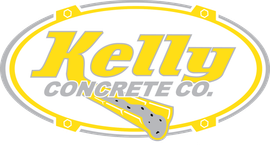Decorative Concrete

Decorative Concrete
How to Achieve 6 Different Styles of Decorative Concrete
When it comes to home makeovers, the bathroom and the kitchen are typically the first places homeowners consider. In fact, it is common to overlook the exterior of your home, which is one of the primary ways to increase the resale value of your home. The same concept applies to businesses as well; the interior is typically the main concern. First impressions count, whether it is a residence or a business and one of the easiest ways to make a great first impression is with the use of concrete. Its concrete companies homeowners and business owners should consider when looking for ways to improve curb appeal and increase the resale value of their property. Here are 6 different ways decorative concrete can add beauty to your property.
What is Decorative Concrete?
Concrete companies, homeowners and business owners are considering their options for concrete projects without using simply traditional concrete or aggregate. Decorative concrete makes use of traditional concrete, but adds an extra touch of charm that concrete typically cannot otherwise provide. Depending on your tastes and preference, a concrete professional will take the necessary steps before the concrete has cured to provide the design and style you are interested in. There are several different styles a concrete contractor can incorporate into the project. So, what exactly is decorative concrete? It is basically a term used for concrete that is patterned, embossed, stained and/or textured. A few of the decorative styles to choose from include:
- Acid staining-during this process, an acid is applied to the concrete after it has hardened, then an etching is carefully done on the top layer of the concrete, which also adds colors as well. This type of application provides a marble-like effect on the existing concrete slab.
- Epoxy Coating-epoxy is a type of adhesive that is typically used in high traffic areas. It provides the concrete with additional strength, while giving it a smooth and elegant finish. Epoxy is typically used for commercial and industrial treatments; however, it has become increasingly more popular for homeowners, especially for use in the garage or basement.
- Stamped concrete-This style is done when the concrete is being cured. There are numerous design options that can be stamped into the concrete to provide various effects, including the look of bricks, blocks, cobblestone and slate.
- Reflector enhancer-this is one of the most recent developments in decorative concrete. This look is achieved by mixing metal shavings with other additives that are reflective in nature. The mixture is added to an epoxy and once applied to the concrete, the end result is a 3D look.
- Dyes-as the concrete is poured, it can be mixed with a wide variety of colors. Some of the most popular and commonly used colors include blue, red and brown; however, almost any color can be used to coordinate with the surrounding landscaping.
- Concrete overlays- one of the most common reasons for homeowners to contact a concrete company is due to cracked, pitted or damaged concrete. An attractive, easy and inexpensive solution to these problems is with concrete overlays. There are varying thicknesses of overlays available, depending on the severity of the problem you could choose anywhere from 1/8 of an inch to 4 or more inches. The concrete is basically coated with a mixture that hardens, strengthening the concrete below, as well as covers any damages to the concrete.
There are several different ways a concrete company improve the look of your landscaping with decorative concrete. For example, decorative concrete can be utilized to improve the look of your driveway, to turn your patio from dull to dazzling or to improve the look of the garage floor. The options for decorative concrete are almost limitless.
Contact
Kelly Concrete Co. to learn more information about decorative concrete can help to improve the curb appeal of your home.
Start Your Concrete Project Today!
Contact Us
Thank you for contacting us.
We will get back to you as soon as possible
We will get back to you as soon as possible
Oops, there was an error sending your message.
Please try again later
Please try again later
We promise to keep your info safe!
At Kelly Concrete we GUARANTEE our estimates to be the best value, quantity to quantity, of any of our competitors. Our years of experience combined with our quality of work and top notch customer service sets us apart from others.
SERVICES
Concrete Companies Cedar Rapids | Concrete Companies Marion | Concrete Companies Iowa City | Concrete Companies North Liberty | Concrete Companies Dubuque | Concrete Companies Coralville | Concrete Companies Waterloo | Concrete Companies Cedar Falls | Concrete Cedar Rapids | Concrete Marion | Concrete Iowa City
| Concrete North Liberty | Concrete Dubuque
| Concrete Coralville | Concrete Waterloo | Concrete Cedar Falls | Concrete Contractors Cedar Rapids | Concrete Contractors Marion | Concrete Contractors Iowa City | Concrete Contractors North Liberty | Concrete Contractors Dubuque | Concrete Contractors Coralville | Concrete Contractors Waterloo | Concrete Contractors Cedar Falls | Concrete Retaining Wall Iowa City | Basement Waterproofing Iowa City | Concrete Pumping Iowa City | Home Builders Cedar Rapids | Home Builders Iowa City
| Concrete Company Cedar Rapids | Concrete Company Iowa City | Concrete Foundation Cedar Rapids | Concrete Foundation Iowa City | Stamped Concrete Iowa City | Driveways Cedar Rapids | Driveways Iowa City | Concrete Driveways | Driveway Installers | Sidewalk Installers | Concrete Slabs | Concrete Pumping Cedar Rapids
| Stamped Concrete Cedar Rapids
| Concrete Patios
© Copyright 2019 | All Rights Reserved | Kelly Concrete Co.
Web Design & Digital Marketing With ♥
By Dotcom Design


